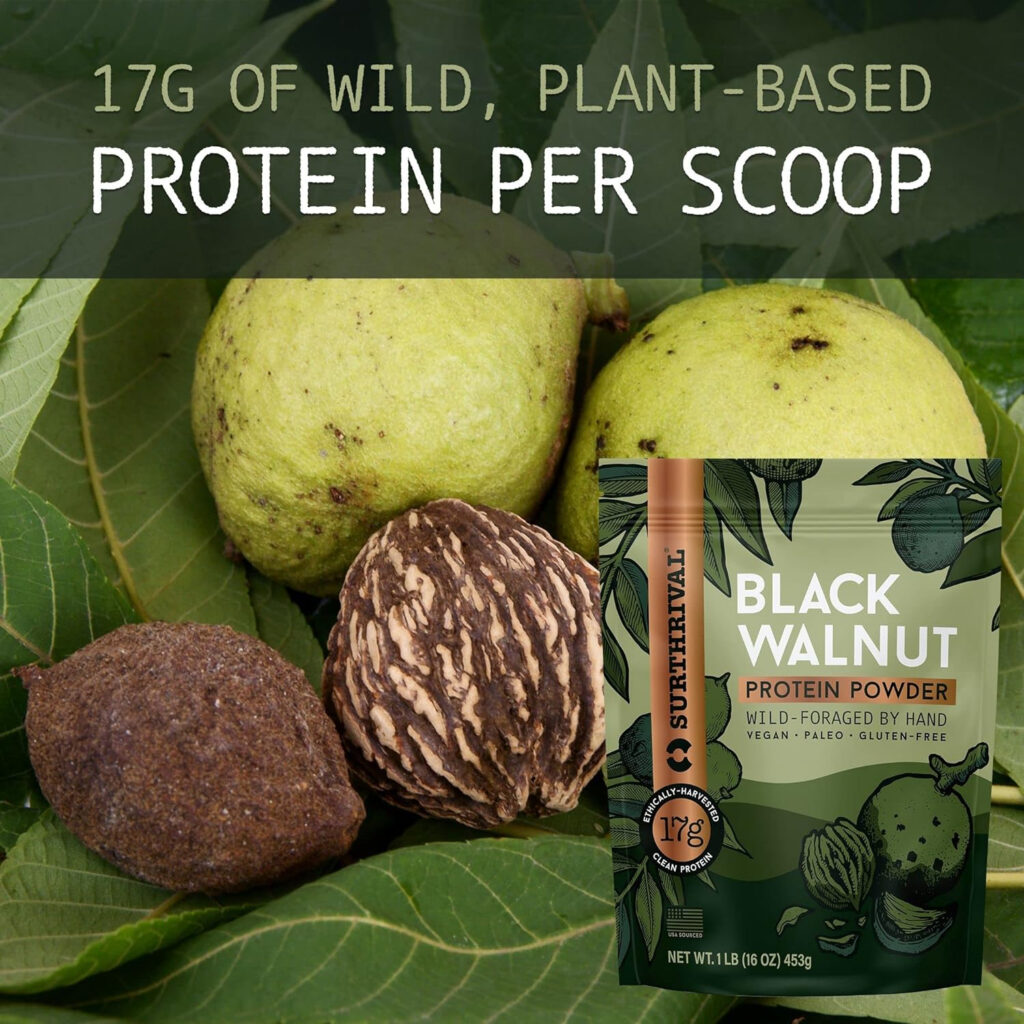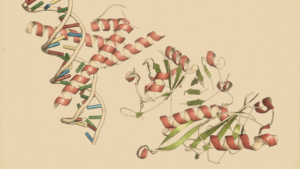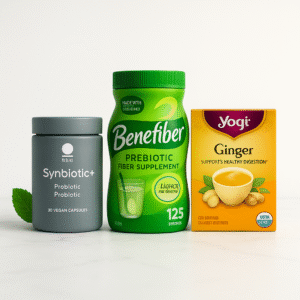Facts Why Walnut is a Top Sustainable Plant Protein Source
Dive into the world of walnut protein, a sustainable plant protein source offering unique nutritional and environmental benefits.

In a world increasingly turning towards plant-based nutrition, walnut protein emerges as a top sustainable plant protein source.
This versatile nut not only boasts a rich nutritional profile but also exhibits unique physicochemical properties, making it a valuable ingredient in both food sustainability and pharmacological activities.
Despite concerns about allergenicity, the functional attributes of walnut protein, including its solubility, emulsification, and oil retention capabilities, highlight its potential in diverse applications.
This article delves into the multifaceted role of walnut protein, exploring its impact on health, environment, and future food innovations.

Main Findings
- Walnut proteins have distinct physicochemical properties and functional attributes beneficial for food sustainability and human health.
- They are rich in essential amino acids and exhibit properties like solubility, emulsification, and water and oil retention.
- Challenges include allergenicity and some physicochemical limitations, but strategies for future research and processing are suggested.
- Walnut proteins and peptides show potential in pharmacological activities and food applications.
Keywords: walnut; protein; sustainability, sustainable plant protein source
Introduction to Walnut Proteins
In an era marked by population growth and climate challenges, global food systems face sustainability threats due to increased greenhouse gas emissions from food production.
To address this, the spotlight is on sustainable protein sources, and one contender is walnut protein (Juglans regia L.).
Recognized by the FDA for its health benefits, walnuts are celebrated for their nutritional value and are often incorporated into various foods A Trusted Source
Mexis, S.F.; Kontominas, M.G. Effect of γ-irradiation on the physicochemical and sensory properties of walnuts (Juglans regia L.). Eur. Food Res. Technol. 2009, 228, 823–831. [Google Scholar, CrossRef].
Walnuts have an oil content of 62–68%, rich in polyunsaturated fatty acids.
However, the production process generates substantial walnut meal, with over half of it being walnut protein.
Sadly, this protein is underutilized and often relegated to animal feed due to its poor solubility and functional properties A Trusted Source
Bakkalbasi, E.; Meral, R.; Dogan, I. Bioactive compounds, physical and sensory properties of cake made with walnut press-cake. J. Food Qual. 2015, 38, 422–430. [Google Scholar, CrossRef].
Yet, if we can harness walnut meal protein effectively, it could revolutionize the walnut industry and health food development A Trusted Source
Zhu, Z.; Zhu, W.; Yi, J.; Liu, N.; Cao, Y.; Lu, J.; Decker, E.A.; McClements, D.J. Effects of sonication on the physicochemical and functional properties of walnut protein isolate. Food Res. Int. 2018, 106, 853–861. [Google Scholar, CrossRef].
This article provides a comprehensive exploration of walnut protein, emphasizing its physicochemical properties, global distribution, and nutritional attributes.
It also addresses current challenges in its application and offers strategies that may benefit emerging plant protein sources.
Walnut protein holds promise not only for health-conscious individuals but also for a sustainable food future.
Walnut Varieties Around the World
The Global Landscape of Walnut Protein: A Sustainable Plant Protein Source
In 2018, the world dedicated a vast 1,186,398 hectares to walnut cultivation, yielding over 3.6 million metric tons annually A Trusted Source
FAO. FAO Statistical Data; FAO: Rome, Italy, 2018; Available online: http://www.fao.org/faostat/en/ (accessed on 4 June 2020).[http://www.fao.org/faostat/en/].
Half of these walnuts hail from China, followed by the USA, Iran, and Turkey A Trusted Source
Ebru, K.; Sule, H.A.; Muhammet, A.G.; Akide, O.; Muharrem, E. Phenolic and fatty acid profile, and protein content of different walnut cultivars and genotypes (Juglans regia L.) grown in the USA. Int. J. Fruit Sci. 2020, 20, 1711–1720. [Google Scholar, CrossRef].
Figure 1 offers a visual summary of key walnut-producing countries and their production volumes, influenced by factors like species, environmental conditions, and historical traditions.
Walnuts belong to the Juglandaceae family (Juglans), with over 20 species distributed across Asia, Europe, and the Americas.
Asia
China, the leading global walnut producer, cultivates over 20 walnut species.
Juglans sigillata, prominent in Yunnan Province, boasts a protein content of approximately 15%.
Shanxi, the second-largest walnut-producing province, offers Fenyang walnuts with over 57% fat and 15% protein.
Xinjiang, with its ample daylight and temperature fluctuations, nurtures Aksu walnuts containing 19.35% protein, meeting human nutritional needs.
Iran ranks third globally in walnut production, contributing 9.1% to the world's total A Trusted Source
Darab, H.; Saadat, S.; Raana, D.; Razie, M.; Asghar, S.; Kourosh, V. Situation and recent trends on cultivation and breeding of Persian walnut in Iran. Sci. Hortic. 2020, 270, 109369. [Google Scholar, CrossRef].

Iran also stands as the fifth-largest in terms of harvested walnut orchards, covering 4.9% of global walnut cultivation A Trusted Source
FAO. FAO Statistical Data; Food and Agriculture Organization of the United Nations: Rome, Italy, 2023; Available online: http://www.fao.org/faostat/en/#data/QC (accessed on 24 March 2023).[http://www.fao.org/faostat/en/#data/QC].
Modern markets are also keen on cloned varieties, such as the "Qingxiang" walnut from Nagano, Japan, with an average protein content of 23.1%.
Europe
Turkey cultivates walnuts across the country, with the Aegean region leading with 7696.3 hectares and Yalova No.
1 walnuts boasting 23% protein content A Trusted Source
Wang, G.P.; Tekintas, F.E. Walnut Footprints in Turkey. Shanxi Fruits 2016, 4, 52–53. [Google Scholar, CrossRef].
Romania, in the decade from 2000 to 2010, saw walnuts, wild or semi-wild, account for 3% of all fruit production.
Notable varieties like Franquette, originating in France, have found their way into European and American walnut-producing regions, with economic advantages.
America
In the United States, walnut cultivation spanned 107,600 hectares in 2010, with 99% of the output concentrated in California.
Varieties like Chandler, with 37% of the walnut acreage, lead the pack in yield and protein potential A Trusted Source
Zhao, P.; Liu, J.F. Selection of California walnut varieties. Agric. Dev. Equip. 2014, 6, 135–136. [Google Scholar].
What Makes Walnut Protein Special
Structural and Physiochemical Properties of Walnut Proteins
Composition and Molecular Structure of Walnut Protein
Walnut proteins possess distinct properties determined by their molecular structure.
These proteins can be categorized into four types: water-soluble albumin (7.54%), salt-soluble globulin (15.67%), alcohol-soluble prolamins (4.73%), and alkaline-soluble glutens (72.06%) of the total walnut protein content.
Gluten, the dominant storage protein in walnuts, encompasses gliadins and glutenins, contributing to its solubility in aqueous alcohol.
Glutenins form glutenin macropolymer through disulphide bonds, while gliadins remain monomeric, impacting gluten's elasticity.
Additionally, albumin and globulin fractions contain multiple polypeptides, ranging from 12,000 to 85,000 kDa.
Amino acid analysis reveals balanced essential amino acid content in gluten, albumin, and globulin, meeting FAO recommendations for adults.
These proteins are also rich in Glu and Arg, hydrophilic amino acids, with uniform distribution among the fractions.
Circular binary chromatography shows that walnut protein's secondary structure mainly comprises α-helix, β-fold, β-rotation, and random coil, with α-helix and random coil being predominant.
7S vicilin, a typical globulin, stands as one of the few walnut proteins with a crystal structure.
Walnut vicilin is unique for being a copper-binding protein.
2S albumin, without a reported crystal structure, exhibits α-helix domains linked by loops, stabilized by three disulphide bonds.
In contrast, gluten and prolamin exhibit high structural heterogeneity due to their complex composition, resulting in low solubility A Trusted Source
Wieser, H. Chemistry of gluten proteins. Food Microbiol. 2007, 24, 115–119. [Google Scholar, CrossRef] A Trusted Source
Downs, M.L.; Simpson, A.; Custovic, A.; Semic-Jusufagic, A.; Bartra, J.; Fernandez-Rivas, M.; Taylor, S.L.; Baumert, J.L.; Mills, E.C. Insoluble and soluble roasted walnut proteins retain antibody reactivity. Food Chem. 2016, 194, 1013–1021. [Google Scholar, CrossRef] A Trusted Source
Zhang, M.L.; Gao, J.L.; Yang, H.X. Functional Properties of 7s Globulin Extracted from Cowpea Vicilins. Cereal Chem. 2009, 86, 261–266. [Google Scholar, CrossRef].

Properties of Walnut Protein
Solubility
Protein solubility is a critical quality parameter affected by factors like solvent, temperature, and pH.
Walnut protein's solubility is pH-dependent, with minimal solubility at pH 4 and maximal at pH above 8.
Heat sensitivity impacts solubility, peaking at 55°C and decreasing thereafter until denaturation at 67.05°C.
Surface hydrophobicity and surface charge balance influence solubility.
0.1 M NaOH enhances solubility, while 70% ethanol aqueous solution decreases protein mass.
High-speed shearing, high-intensity ultrasound, and high-pressure treatment improve solubility, with ultrasonic treatment increasing water solubility by 22%.
Chemical modification using sodium trimetaphosphate and sodium tripolyphosphate enhances solubility, and enzymatic modification alters properties and functional properties while increasing digestibility A Trusted Source
Jakobek, L. Interactions of polyphenols with carbohydrates, lipids and proteins. Food Chem. 2015, 175, 556–567. [Google Scholar, CrossRef] A Trusted Source
Lawal, O.S. Functionality of African locust bean (Parkia biglobossa) protein isolate: Effects of pH, ionic strength and various protein concentrations. Food Chem. 2004, 86, 345–355. [Google Scholar, CrossRef] A Trusted Source
Moure, A.; Sineiro, J.; Dominguez, H.; Parajo, J.C. Functionality of oilseed protein products: A review. Food Res. Int. 2007, 39, 945–963. [Google Scholar, CrossRef] A Trusted Source
Madadlou, A.; Emam-Djomeh, Z.; Mousavi, M.E.; Mohamadifar, M.; Ehsani, M. Acid-induced gelation behavior of sonicated casein solutions. Ultrason. Sonochem. 2010, 17, 153–158. [Google Scholar, CrossRef, PubMed] A Trusted Source
Matheis, G. Phosphorylation of food proteins with phosphorus oxychloride improvement of functional and nutritional properties: A review. Food Chem. 1991, 39, 13–26. [Google Scholar, CrossRef].
Emulsification
Globulin exhibits the highest emulsification stability among walnut proteins, influenced by pH, salt ion concentration, concentration, and temperature.
High hydrostatic pressure enhances emulsion activity but decreases stability.
Ultrasound is a promising technique to prepare protein emulsions, with high-power ultrasound improving emulsifying properties.
Polyphenols, including catechin and chlorogenic acid, enhance emulsification by obstructing protein-lipid interaction, stabilizing emulsions, and acting as antioxidants A Trusted Source
Hu, Z.; Qiu, L.; Sun, Y.; Xiong, H.; Ogra, Y. Improvement of the solubility and emulsifying properties of rice bran protein by phosphorylation with sodium trimetaphosphate. Food Hydrocoll. 2019, 96, 288–299. [Google Scholar, CrossRef] A Trusted Source
Deng, X.L.; Zhao, Q.Z. Study on conformation and functional properties of walnut protein and its components. Mod. Food Sci. Technol. 2017, 33, 48–61. [Google Scholar, CrossRef] A Trusted Source
Ozdal, T.; Capanoglu, E.; Altay, F. A review on protein-phenolic interactions and associated changes. Food Res. Int. 2013, 51, 954–970. [Google Scholar, CrossRef].
Water and Oil Retention
Water retention of walnut protein is influenced by factors like pH, salt concentration, temperature, and ionization.
The water-holding ability increases with pH above 4 and salt concentration.
Temperature variations also impact water retention.
Oil retention is influenced by enzymatic hydrolysis, which exposes hydrophobic amino acids, increasing oil-binding capacity.
Structural changes during processing can also affect oil-holding capacity, as demonstrated in modified walnut glutelin improving various functional properties A Trusted Source
Hu, H.; Fan, T.; Zhao, X.; Zhang, X.; Sun, Y.; Liu, H. Influence of pH and salt concentration on functional properties of walnut protein from different extraction methods. J. Food Sci. Technol. 2017, 54, 2833–2841. [Google Scholar, CrossRef] A Trusted Source
Ding, X.W.; Zhang, H.; Yao, S.; Li, G.J. Study on the functional properties of walnut protein and their affecting factors. J. Southwest Agric. Univ. (Nat. Sci.) 2005, 27, 766–780. [Google Scholar] A Trusted Source
Sun, Q.; Ma, Z.F.; Zhang, H.X.; Ma, S.J.; Kong, L.M. Structural characteristics and functional properties of walnut glutelin as hydrolyzed: Effect of enzymatic modification. Int. J. Food Prop. 2019, 22, 265–279. [Google Scholar, CrossRef].
Understanding these properties and functionalities of walnut proteins is essential for utilizing them effectively in various food applications, supporting sustainable plant-based nutrition.
To easily incorporate the benefits of walnut protein into your diet, consider trying Walnut Protein Supplements. These supplements are crafted from high-quality, sustainably sourced walnuts, ensuring you receive the full spectrum of their nutritional value, including essential amino acids and omega-3 fatty acids. Perfect for those on a plant-based diet or anyone looking to add a nutritious boost to their daily routine.
Health Benefits of Walnut Protein
Walnuts have long been recognized as exceptional among functional foods due to their impressive nutritional and functional attributes, including anticancer, anti-inflammatory, and antioxidant properties.
Additionally, they offer various pharmacological benefits such as brain and cardiovascular protection and diabetes management A Trusted Source
Ni, Z.J.; Zhang, Y.G.; Chen, S.X.; Thakur, K.; Wang, S.; Zhang, J.G.; Shang, Y.F.; Wei, Z.J. Exploration of walnut components and their association with health effects. Crit. Rev. Food Sci. Nutr. 2021, 62, 5113–5129. [Google Scholar, CrossRef, PubMed].
Understanding Bioactive Peptides in Walnut Protein
Walnut proteins are not only rich in essential amino acids but also house bioactive peptides that have gained attention for their health-promoting properties.
Bioactive peptides, composed of 2 to 20 amino acid residues, possess unique physiological functions and nutritional significance A Trusted Source
Ulug, S.K.; Jahandideh, F.; Wu, J. Novel technologies for the production of bioactive peptides. Trends Food Sci. Technol. 2021, 108, 27–39. [Google Scholar, CrossRef].
These peptides, with their small molecular weight, can be directly absorbed by the human body without the need for digestion.
Notably, they exhibit protective effects against neuroinflammation and oxidative stress.
For instance, the tripeptide Leu-Pro-Phe (LPF) has demonstrated robust anti-neuroinflammatory effects, attributed to its high hydrophobicity, which enables it to traverse cell membranes effectively A Trusted Source
Vo, T.S.; Ryu, B.; Kim, S.K. Purification of novel anti-inflammatory peptides from enzymatic hydrolysate of the edible microalgal Spirulina maxima. J. Funct. Foods 2013, 5, 1336–1346. [Google Scholar, CrossRef].
Peptides rich in leucine or proline have shown anti-inflammatory activity by inhibiting specific signaling pathways.
Several studies have highlighted the ability of walnut peptides to combat oxidative stress and reduce neuroinflammation associated with conditions like neurodegenerative diseases A Trusted Source
Daroit, D.J.; Brandelli, A. In Vivo bioactivities of food protein-derived peptides—A current review. Curr. Opin. Food Sci. 2021, 39, 120–129. [Google Scholar, CrossRef].
Some walnut peptides have also displayed antioxidant activity and cytoprotective effects A Trusted Source
Gu, M.; Chen, H.P.; Zhao, M.M.; Wang, X.; Yang, B.; Ren, J.Y.; Su, G.W. Identification of antioxidant peptides released from defatted walnut (Juglans Sigillata Dode) meal proteins with pancreatin. LWT-Food Sci. Technol. 2015, 60, 213–220. [Google Scholar, CrossRef].
Walnut peptides have the potential to regulate lipid metabolism and even inhibit angiotensin l-converting enzyme (ACE) A Trusted Source
Liu, M.; Du, M.; Zhang, Y.; Xu, W.; Wang, C.; Wang, K.; Zhang, L. Purification and identification of an ACE inhibitory peptide from walnut protein. J. Agric. Food Chem. 2013, 61, 4097–4100. [Google Scholar, CrossRef].
These peptides are gaining recognition not only as nutritional supplements but also as components of clinical therapies.

Methods to Extract Peptides from Walnut Protein
To extract these valuable peptides from walnut proteins, various methods are employed.
Enzymatic hydrolysis, fermentation, and in vivo or in vitro digestion are among the primary techniques used to release peptides from proteins.
Enzymatic hydrolysis, known for its specificity, efficiency, and gentleness, is the most widely utilized method.
Enzymes like alkaline protease, papain, trypsin, and pepsin have been reported for the hydrolysis of walnut protein.
Physical methods such as ultrasound, high pressure, and microwaves are also employed to enhance hydrolysis efficiency A Trusted Source
Wu, S.F.; Qi, W.; Li, T.H.; Lu, D.; Su, R.X.; He, Z.M. Simultaneous production of multi-functional peptides by pancreatic hydrolysis of bovine casein in an enzymatic membrane reactor via combinational chromatography. Food Chem. 2013, 141, 2944–2951. [Google Scholar, CrossRef] A Trusted Source
Golly, M.K.; Ma, H.; Duan, Y.; Liu, D.; Quaisie, J.; Tuli, J.A.; Mintah, B.K.; Dzah, C.S.; Agordoh, P.D. Effect of multi-frequency countercurrent ultrasound treatment on extraction optimization, functional and structural properties of protein isolates from Walnut (Juglans regia L.) meal. J. Food Biochem. 2020, 44, e13210. [Google Scholar, CrossRef].
Walnut Protein as a Nanocarrier
Walnut protein's unique properties make it an ideal candidate for use as a nanocarrier for various applications.
These plant-based proteins are considered safe and stable in vivo, eliminating the risks associated with animal proteins carrying pathogens A Trusted Source
Elzoghby, A.O.; Samy, W.M.; Elgindy, N.A. Protein-based nanocarriers as promising drug and gene delivery systems. J. Control. Release 2012, 161, 38–49. [Google Scholar, CrossRef] A Trusted Source
Malekzad, H.; Mirshekari, H.; Sahandi Zangabad, P.; Sahandi Zangabad, P.; Moosavi Basri, S.M.; Baniasadi, F.; Sharifi Aghdam, M.; Karimi, M.; Hamblin, M.R. Plant protein-based hydrophobic fine and ultrafine carrier particles in drug delivery systems. Crit. Rev. Biotechnol. 2018, 38, 47–67. [Google Scholar, CrossRef].
Walnut protein exhibits a natural affinity for non-polar molecules like fat and offers excellent emulsification and solubility under alkaline conditions A Trusted Source
Sze-Tao, K.W.C.; Sathe, S.K. Walnuts (Juglans regia L): Proximate composition, protein solubility, protein amino acid composition and protein in vitro digestibility. J. Sci. Food Agric. 2000, 80, 1393–1401. [Google Scholar, CrossRef].
One promising application involves encapsulating lipophilic compounds, such as curcumin, to enhance their bioavailability.
In one study, walnut protein nanoparticles successfully encapsulated curcumin, improving its solubility and stability.
The protective effect of walnut protein allowed curcumin to remain intact in the stomach and release in the intestine, enhancing its bioavailability.
These nanoparticles also exhibited increased antioxidant activity due to bioactive peptides released during in vitro digestion A Trusted Source
Asadi, M.; Salami, M.; Hajikhani, M.; Emam-Djomeh, Z.; Aghakhani, A.; Ghasemi, A. Electrospray production of curcumin-walnut protein nanoparticles. Food Biophys. 2021, 16, 15–26. [Google Scholar, CrossRef] A Trusted Source
Lv, S.Y.; Lu, Q.; Pan, S.Y. Stability and In Vitro Digestion of Pectin-Walnut Proteins Stabilized Emulsions Encapsulating Curcumin. J. Food Sci. 2021, 8, 1–9. Available online: https://kns.cnki.net/KCMS/detail/detail.aspx?dbname=cjfd2021&filename=spkx202108001&dbcode=cjfq (accessed on 6 April 2020).[https://kns.cnki.net/KCMS/detail/detail.aspx?dbname=cjfd2021&filename=spkx202108001&dbcode=cjfq].
Microencapsulation for Food Preservation
Microencapsulation using walnut protein has significant potential in food preservation.
For example, carvacrol, a natural phenolic compound with antibacterial and antioxidant properties, was successfully encapsulated using walnut protein and gum Arabic.
This approach improved carvacrol's thermal stability and allowed for its gradual release in the intestine, enhancing bioavailability.
Furthermore, these microcapsules displayed antibacterial activities, highlighting their potential for food preservation A Trusted Source
Sun, J.; Cheng, Y.; Zhang, T.; Zang, J. Microencapsulation of Carvacrol by Complex Coacervation of Walnut Meal Protein Isolate and Gum Arabic: Preparation, Characterization and Bio-Functional Activity. Foods 2022, 11, 3382. [Google Scholar, CrossRef].
Walnut Protein in Functional Food Products
Walnuts, often hailed for their health benefits, are emerging as a functional food that can combat inflammation when incorporated into one's diet A Trusted Source
Atanasov, A.G.; Sabharanjak, S.M.; Zengin, G.; Mollica, A.; Szostak, A.; Simirgiotis, M.; Huminiecki, L.; Horbanczuk, O.K.; Nabavi, S.M.; Mocan, A. Pecan nuts: A review of reported bioactivities and health effects. Trends Food Sci. Technol. 2018, 71, 246–257. [Google Scholar, CrossRef].
Enhance your sustainable cooking practices with Eco-Friendly Kitchenware. These tools are designed with both the environment and functionality in mind, featuring materials like bamboo and recycled stainless steel. They are the perfect complement for preparing meals that include nutritious ingredients like walnut protein, helping you maintain a sustainable and health-conscious kitchen.
Traditional Walnut Milk: A Nutrient-Rich Beverage
Traditional walnut milk is a popular and nutritious beverage, boasting ample protein, vitamin B, nicotinic acid, and an appealing walnut aroma.
Factors like the water-to-oil ratio have been identified as key influencers, impacting characteristics like turbidity, size index, and opacity A Trusted Source
Gharibzahedi, S.M.T.; Mousavi, S.M.; Khodaiyan, F.; Hamedi, M. Optimization and characterization of walnut beverage emulsions in relation to their composition and structure. Int. J. Biol. Macromol. 2012, 50, 376–384. [Google Scholar, CrossRef, PubMed].
Investigations into its physicochemical stability have examined the effects of pH, freeze-thaw cycles, and thermal sterilization.
The choice of emulsifier and the duration of thermal sterilization were found to significantly affect both the physical and oxidative stability of the beverage, possibly impacting the interfacial layer formed by walnut protein and xanthan gum A Trusted Source
Liu, S.; Sun, C.X.; Xue, Y.H.; Gao, Y.X. Impact of pH, freeze–thaw and thermal sterilization on physicochemical stability of walnut beverage emulsion. Food Chem. 2016, 196, 475–485. [Google Scholar, CrossRef].
Fermentation has also gained popularity as a processing method for walnut-based beverages, enhancing both taste and nutritional attributes.
Research has explored the use of kefir grains as an inoculum, suggesting optimal conditions for sensory quality enhancement, including temperature, duration, inoculum size, and sucrose concentration A Trusted Source
Cui, X.H.; Chen, S.J.; Wang, Y.; Han, J.R. Fermentation conditions of walnut milk beverage inoculated with kefir grains. LWT-Food Sci. Technol. 2013, 50, 349–352. [Google Scholar, CrossRef].
To address concerns related to the safety of plant-based beverages, a strategy based on DNA barcoding has been developed to accurately identify raw ingredients in walnut milk beverages A Trusted Source
Ding, Y.; Jiang, G.; Huang, L.; Chen, C.; Sun, J.; Zhu, C. DNA barcoding coupled with high-resolution melting analysis for nut species and walnut milk beverage authentication. J. Sci. Food Agric. 2020, 100, 2372–2379. [Google Scholar, CrossRef].
Walnut Protein Elevating Meat Products: A Heart-Healthy Option
Walnut protein has proven to be a versatile component, acting as an effective adhesive, filler, and flavor enhancer.
It finds wide application in meat products such as sausages and ham, preserving the products' exquisite texture and flavor.
Studies have assessed the physicochemical and sensory characteristics of beef steak enriched with varying proportions of walnuts.
The findings indicate that walnuts can influence the formation of protein network structures, resulting in improved properties A Trusted Source
Jiménez-Colmenero, F.; Serrano, A.; Ayo, J.; Solas, M.T.; Cofrades, S.; Carballo, J. Physicochemical and sensory characteristics of restructured beef steak with added walnuts. Meat Sci. 2003, 65, 1391–1397. [Google Scholar, CrossRef].
Additionally, incorporating walnuts into meat products has been observed to significantly enhance frozen stability without any adverse effects A Trusted Source
Serrano, A.; Cofrades, S.; Jimnez-Colmenero, F. Characteristics of restructured beef steak with different proportions of walnut during frozen storage. Meat Sci. 2006, 72, 108–115. [Google Scholar, CrossRef].
This suggests that the inclusion of nuts in meat products can offer potential heart health benefits.
Furthermore, the consumption of meat enriched with walnuts has been shown to boost the antioxidant status of individuals at risk of coronary heart disease A Trusted Source
Canales, A.; Benedí, J.; Nus, M.; Librelotto, J.; Sánchez-Montero, J.M.; Sánchez-Muniz, F.J. Effect of walnut-enriched restructured meat in the antioxidant status of overweight/obese senior subjects with at least one extra CHD-risk factor. J. Am. Coll. Nutr. 2007, 26, 225–232. [Google Scholar, CrossRef, PubMed].
Consequently, walnuts emerge as a promising raw material for functional foods, providing adequate energy for overweight and obese individuals without negative impacts on body weight.

Understanding Challenges with Walnut Protein
Addressing Walnut Allergenicity
Walnuts, although celebrated for their health benefits, can pose allergenic risks, with English walnut (Juglans regia) being a common culprit A Trusted Source
Sicherer, S.H.; Furlong, T.J.; Muoz-Furlong, A.; Burks, A.W.; Sampson, H.A. A voluntary registry for peanut and tree nut allergy: Characteristics of the first 5149 registrants. J. Allergy Clin. Immunol. 2001, 108, 128–132. [Google Scholar, CrossRef, PubMed].
Severe allergic reactions to walnut proteins have been documented in various studies A Trusted Source
Bock, S.A.; Muñoz-Furlong, A.; Sampson, H.A. Fatalities due to anaphylactic reactions to foods. J. Allergy Clin. Immunol. 2001, 107, 191–193. [Google Scholar, CrossRef, PubMed] A Trusted Source
Sampson, H.A.; Mendelson, L.; Rosen, J.P. Fatal and near-fatal anaphylactic reactions to food in children and adolescents. N. Engl. J. Med. 1992, 327, 380–384. [Google Scholar, CrossRef] A Trusted Source
Sicherer, S.H.; Burks, A.W.; Sampson, H.A. Electronic Article: Clinical features of acute allergic reactions to peanut and tree nuts in children. Pediatrics 1998, 102, e6. [Google Scholar, CrossRef].
English walnuts contain four major allergens, namely Jug r 1 (a 2S albumin), Jug r 2 (a 7S vicilin-like globulin), Jug r 3 (a non-specific lipid transfer protein), and Jug r 4 (an 11S legumin-like globulin) A Trusted Source
Teuber, S.S.; Dandekar, A.M.; Peterson, W.R.; Sellers, C.L. Cloning and sequencing of a gene encoding a 2S albumin seed storage protein precursor from English walnut (Juglans regia), a major food allergen. J. Allergy Clin. Immunol. 1998, 101, 807–814. [Google Scholar, CrossRef] A Trusted Source
Teuber, S.S.; Jarvis, K.C.; Dandekar, A.M.; Peterson, W.R.; Ansari, A.A. Identification and cloning of a complementary DNA encoding a vicilin-like proprotein, Jug r 2, from English walnut kernel (Juglans regia), a major food allergen. J. Allergy Clin. Immunol. 1999, 104, 1311–1320. [Google Scholar, CrossRef] A Trusted Source
Pastorello, E.A.; Farioli, L.; Pravettoni, V.; Robino, A.M.; Scibilia, J.; Fortunato, D.; Conti, A.; Borgonovo, L.; Bengtsson, A.; Ortolani, C. Lipid transfer protein and vicilin are important walnut allergens in patients not allergic to pollen. J. Allergy Clin. Immunol. 2004, 114, 908–914. [Google Scholar, CrossRef] A Trusted Source
Wallowitz, M.; Peterson, W.R.; Uratsu, S.; Comstock, S.S.; Dandekar, A.M.; Teuber, S.S. Jug r 4, a legumin group food allergen from walnut (Juglans regia Cv. Chandler). J. Agric. Food Chem. 2006, 54, 8369–8375. [Google Scholar, CrossRef].
Sordet and colleagues identified four linear IgE epitopes on Jug r 1, contributing to its allergenicity A Trusted Source
Sordet, C.; Culerrier, R.; Granier, C.; Rancé, F.; Didier, A.; Barre, A.; Rougé, P. Expression of Jug r 1, the 2S albumin allergen from walnut (Juglans regia), as a correctly folded and functional recombinant protein. Peptides 2009, 30, 1213–1221. [Google Scholar, CrossRef, PubMed].
Interestingly, despite structural similarities between Jug r 2 and peanut allergen Ara h 1, cross-reactivity between them is low A Trusted Source
Barre, A.; Sordet, C.; Culerrier, R.; Rancé, F.; Didier, A.; Rougé, P. Vicilin allergens of peanut and tree nuts (walnut, hazelnut and cashew nut) share structurally related IgE-binding epitopes. Mol. Immunol. 2008, 45, 1231–1240. [Google Scholar, CrossRef, PubMed].
Notably, Jug r 2 maintains its allergenicity even after various food processing methods, such as irradiation, microwaving, frying, and grilling A Trusted Source
Suet, M.; Venkatachalam, M.; Teuber, S.S.; Roux, K.H.; Sathe, S.K. Impact of g-irradiation and thermal processing on the antigenicity of almond, cashew nut and walnut protein. J. Sci. Food Agric. 2004, 84, 1119–1125. [Google Scholar, CrossRef].
Moist heat treatments, compared to dry heat, tend to reduce the antigenicity of walnut protein, potentially due to differing chemical reactions induced by water content A Trusted Source
Jiang, S.S.; Zhao, B.; Han, S.W.; Che, H.L. Effect of Different Thermal Processing Treatments on Allergenicity of Walnut Proteins. J. Food Sci. 2018, 39, 94–99. [Google Scholar].
Challenges in Detecting Allergenic Proteins
Detecting allergenic walnut proteins can be challenging due to their low abundance and entwinement within food matrices.
The reduced solubility of walnut proteins further complicates detection A Trusted Source
Downs, M.L.; Simpson, A.; Custovic, A.; Semic-Jusufagic, A.; Bartra, J.; Fernandez-Rivas, M.; Taylor, S.L.; Baumert, J.L.; Mills, E.C. Insoluble and soluble roasted walnut proteins retain antibody reactivity. Food Chem. 2016, 194, 1013–1021. [Google Scholar, CrossRef].
To ensure consumer safety and effective allergen management, the development of sensitive methods for detecting walnut allergens is imperative A Trusted Source
Costa, J.; Oliveira, M.B.P.P.; Mafra, I. Effect of thermal processing on the performance of the novel single-tube nested real-time PCR for the detection of walnut allergens in sponge cakes. Food Res. Int. 2013, 54, 1722–1729. [Google Scholar, CrossRef].
Enhancing Walnut Protein's Functional Properties
Walnut protein primarily comprises glutenin (about 70%), which has limited water solubility, hindering its application in water-based foods.
Therefore, improving the physicochemical properties of walnut protein is crucial.
Innovative Protein Extraction Techniques
Traditional alkali solution extraction, while simple, consumes substantial solvents and energy A Trusted Source
Golly, M.K.; Ma, H.; Duan, Y.; Liu, D.; Quaisie, J.; Tuli, J.A.; Mintah, B.K.; Dzah, C.S.; Agordoh, P.D. Effect of multi-frequency countercurrent ultrasound treatment on extraction optimization, functional and structural properties of protein isolates from Walnut (Juglans regia L.) meal. J. Food Biochem. 2020, 44, e13210. [Google Scholar, CrossRef].
High-intensity ultrasound (HIU) emerges as an eco-friendly alternative, boasting high extraction rates, reduced solvent use, and enhanced protein properties A Trusted Source
Jambrak, A.R.; Mason, T.J.; Lelas, V.; Herceg, Z.; Herceg, I.L. Effect of ultrasound treatment on solubility and foaming properties of whey protein suspensions. J. Food Eng. 2008, 86, 281–287. [Google Scholar, CrossRef] A Trusted Source
Hu, H.; Wu, J.; Li-Chan, E.C.Y.; Zhu, L.; Zhang, F.; Xu, X.; Fan, G.; Wang, L.; Huang, X.; Pan, S. Effects of ultrasound on structural and physical properties of soy protein isolate (SPI) dispersions. Food Hydrocoll. 2013, 30, 647–655. [Google Scholar, CrossRef] A Trusted Source
Wang, J.Y.; Yang, Y.L.; Tang, X.Z.; Ni, W.X.; Zhou, L. Effects of pulsed ultrasound on rheological and structural properties of chicken myofibrillar protein. Ultrason. Sonochem. 2017, 38, 225–233. [Google Scholar, CrossRef].
HIU achieves this through acoustic cavitation, which disrupts protein interactions, increasing solubility A Trusted Source
Arzeni, C.; Martínez, K.; Zema, P.; Arias, A.; Pérez, O.E.; Pilosof, A.M.R. Comparative study of high intensity ultrasound effects on food proteins functionality. J. Food Eng. 2012, 108, 463–472. [Google Scholar, CrossRef].
Ultrasonic treatment optimally enhances water solubility and functional properties of walnut protein A Trusted Source
Morel, M.H. Effects of temperature, sonication time, and power settings on size distribution and extractability of total wheat flour proteins as determined by size-exclusion high-performance liquid chromatography. Cereal Chem. 2000, 77, 685–691. [Google Scholar, CrossRef].
Reverse Micellar Extraction (RME)
Reverse micellar extraction (RME) stands as another promising method, facilitating simultaneous separation of oils and proteins using nanoscale reverse micelles A Trusted Source
Prabhu, A.A.; Purkayastha, A.; Mandal, B.; Kumar, J.P.; Mandal, B.B.; Veeranki, V.D. A novel reverse micellar purification strategy for histidine tagged human interferon gamma (hIFN-gamma) protein from Pichia pastoris. Int. J. Biol. Macromol. 2018, 107, 2512–2524. [Google Scholar, CrossRef, PubMed].

RME is efficient, energy-friendly, and minimizes protein denaturation, making it an eco-conscious choice A Trusted Source
Mohamad-Aziz, S.N.; Mishra, P.; Zularisam, A.W.; Sakinah, A.M. Isooctane-based anionic and zwitterionic surfactant: Synergistic interaction of mixed reverse micelle and solubilisation of erythromycin. J. Mol. Liq. 2019, 286, 110882. [Google Scholar, CrossRef].
The process involves dissolving biomolecules in a reverse micelle system, followed by reverse extraction into the aqueous phase.
The Future of Walnut Proteins
Walnut proteins offer an emerging sustainable dietary protein source.
This review compared various walnut species, emphasizing protein quality based on solubility, emulsifying ability, and water and oil-holding capacities.
However, structural information on walnut proteins is limited, highlighting a need for advanced structural determination technologies and AI-driven molecular docking.
Exploring walnut protein properties under different conditions and its potential as nanocarriers for unstable functional materials was discussed.
Allergies are a concern, requiring precise identification and processing methods.
Overcoming physicochemical limitations in plant proteins, including walnuts, necessitates green, safe, and cost-effective protein extraction techniques.
Extensive research is vital for walnut's promising protein-rich future.
To understand the full nutritional impact of incorporating walnut protein into your diet, the Nutritional Tracker is an indispensable tool. This app allows you to track your daily nutrient intake, analyze the balance of your meals, and offer personalized recommendations to optimize your health and sustainability goals. It's an ideal companion for those mindful of their dietary choices.
Review date not set.
How we reviewed this article:
Latest on:





